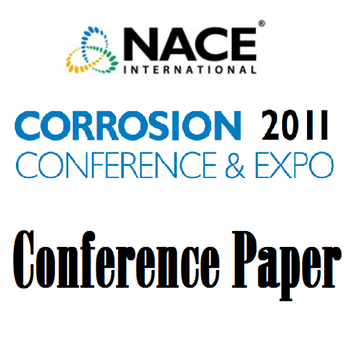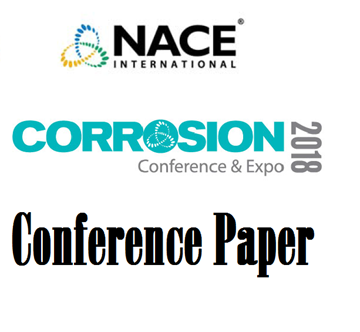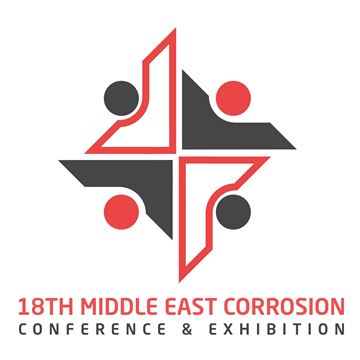Products tagged with 'elevated temperature'
View as
Sort by
Display
per page

Available for download
Product Number:
51300-11294-SG
ISBN:
2011 11294 CP
Author:
Roy Johnson, Bard Nyhus, and Ole Edvard Kongstein
Publication Date:
2011
$20.00
We're sorry, something went wrong.
We are unable to complete this action. Please try again at a later time.
If this error continues to occur, please contact AMPP Customer Support for assistance.
Error Message:
Please login to use Standards Credits*
* AMPP Members receive Standards Credits in order to redeem eligible Standards and Reports in the Store
You are not a Member.
AMPP Members enjoy many benefits, including Standards Credits which can be used to redeem eligible Standards and Reports in the Store.
You can visit the Membership Page to learn about the benefits of membership.
You have previously purchased this item.
Go to Downloadable Products in your AMPP Store profile to find this item.
You do not have sufficient Standards Credits to claim this item.
Click on 'ADD TO CART' to purchase this item.
Please review your transaction.
Click on 'REDEEM' to use your Standards Credits to claim this item.
You have successfully redeemed:
Go to Downloadable Products in your AMPP Store Profile to find and download this item.

Available for download
Product Number:
51318-11294-SG
Author:
Robert P. Badrak
Publication Date:
2018
$20.00
We're sorry, something went wrong.
We are unable to complete this action. Please try again at a later time.
If this error continues to occur, please contact AMPP Customer Support for assistance.
Error Message:
Please login to use Standards Credits*
* AMPP Members receive Standards Credits in order to redeem eligible Standards and Reports in the Store
You are not a Member.
AMPP Members enjoy many benefits, including Standards Credits which can be used to redeem eligible Standards and Reports in the Store.
You can visit the Membership Page to learn about the benefits of membership.
You have previously purchased this item.
Go to Downloadable Products in your AMPP Store profile to find this item.
You do not have sufficient Standards Credits to claim this item.
Click on 'ADD TO CART' to purchase this item.
Please review your transaction.
Click on 'REDEEM' to use your Standards Credits to claim this item.
You have successfully redeemed:
Go to Downloadable Products in your AMPP Store Profile to find and download this item.

Available for download
Product Number:
51324-20382-SG
Author:
Behzad Bavarian; Lisa Reiner
Publication Date:
2024
$40.00
Different vapor phase corrosion inhibitors were evaluated to determine their corrosion inhibition for aluminum alloys in Ethylene glycol (C2H6O2) coolant mixture. When the temperature exceeds 80°C, ethylene glycol can decompose into organic acids. The resulting acidic environments cause severe localized corrosion of aluminum alloys. The corrosion behavior was studied at multiple temperatures in different corrosion inhibitors using different concentrations. Corrosion inhibitor VCI-A, VCI-B, VCI-C, and VCI-D at 2.5-3.0% dosage showed excellent corrosion protection. VCI-A, VCI-C and VCI-D maintained a steady, low corrosion rate during long term exposure by neutralizing pH and forming a hydrophobic film. They increase the polarization resistance by a significant factor, therefore, lowered corrosion rate. VCI-B inhibitor, also showed the ability to reduce the corrosion rate of aluminum in ethylene glycol solutions. However, due to its high pH chemistry, the effective dosage should be maintained at <2.5% to avoid any potential increase in pH that can promote localized corrosion or under-deposit corrosion attacks of aluminum alloys. The results of this investigation demonstrated that these inhibitors can lower the corrosion rate in water-ethylene glycol solutions by neutralizing pH and forming stable films.
We're sorry, something went wrong.
We are unable to complete this action. Please try again at a later time.
If this error continues to occur, please contact AMPP Customer Support for assistance.
Error Message:
Please login to use Standards Credits*
* AMPP Members receive Standards Credits in order to redeem eligible Standards and Reports in the Store
You are not a Member.
AMPP Members enjoy many benefits, including Standards Credits which can be used to redeem eligible Standards and Reports in the Store.
You can visit the Membership Page to learn about the benefits of membership.
You have previously purchased this item.
Go to Downloadable Products in your AMPP Store profile to find this item.
You do not have sufficient Standards Credits to claim this item.
Click on 'ADD TO CART' to purchase this item.
Please review your transaction.
Click on 'REDEEM' to use your Standards Credits to claim this item.
You have successfully redeemed:
Go to Downloadable Products in your AMPP Store Profile to find and download this item.

Available for download
Product Number:
MECC23-19957-SG
Author:
Dr. Mohamed Zawam; Eid Bader; Dr. Julien Saade
Publication Date:
2023
$20.00
We're sorry, something went wrong.
We are unable to complete this action. Please try again at a later time.
If this error continues to occur, please contact AMPP Customer Support for assistance.
Error Message:
Please login to use Standards Credits*
* AMPP Members receive Standards Credits in order to redeem eligible Standards and Reports in the Store
You are not a Member.
AMPP Members enjoy many benefits, including Standards Credits which can be used to redeem eligible Standards and Reports in the Store.
You can visit the Membership Page to learn about the benefits of membership.
You have previously purchased this item.
Go to Downloadable Products in your AMPP Store profile to find this item.
You do not have sufficient Standards Credits to claim this item.
Click on 'ADD TO CART' to purchase this item.
Please review your transaction.
Click on 'REDEEM' to use your Standards Credits to claim this item.
You have successfully redeemed:
Go to Downloadable Products in your AMPP Store Profile to find and download this item.




